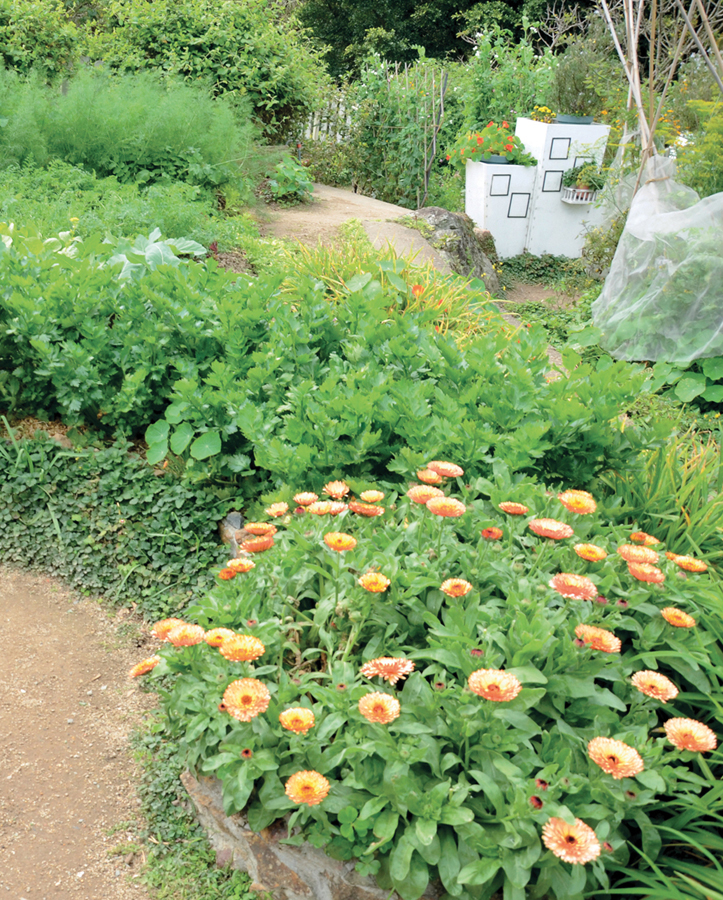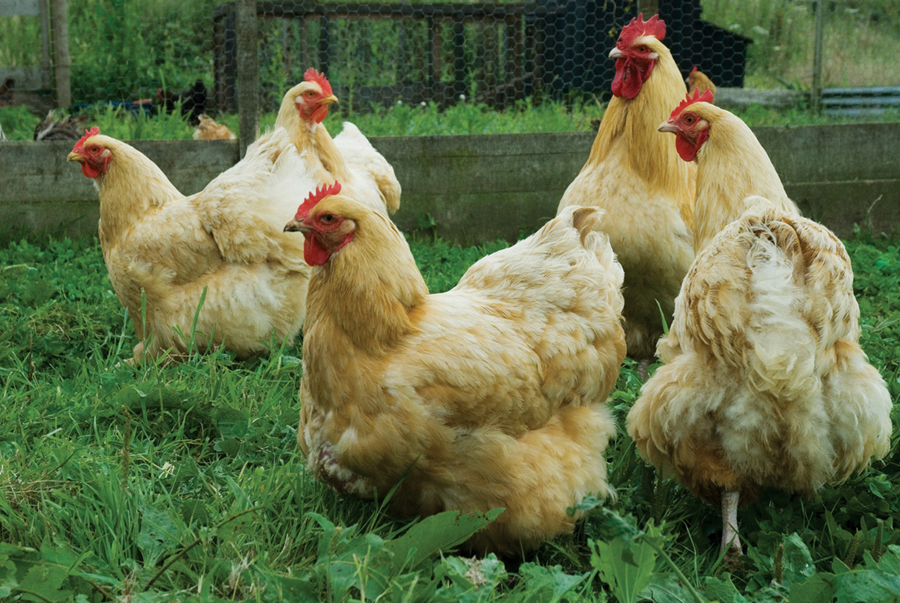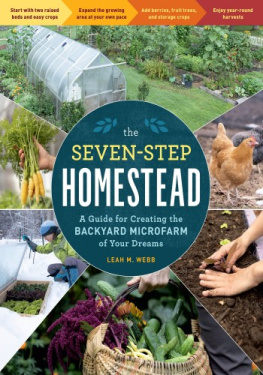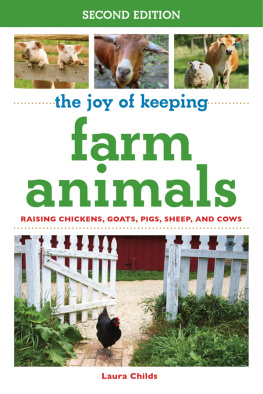
INTRODUCTION
Many people dream of stepping away from the rat race and living on a plot of land where they can be self-sufficient: growing all their own fruit and vegetables, keeping chickens for eggs, and perhaps raising a few pigs or sheep. But with the soaring cost of land and the difficulty of finding the right plot, the reality is that many will probably have to make do with a large garden or a corner of a field. The good news is that it is perfectly possible to grow all the fruit and vegetables needed by a family, raise animals for meat, fish and eggs, keep bees and even produce fuelwood on a small plot of land of just one acre or less.
Much of the developing world relies on the productivity of small farms. There are more than 500 million smallholder farms around the world, and more than 2 billion people rely on them for their livelihoods. Between them, these small farms produce four-fifths of all the food eaten in Asia and sub-Saharan Africa. More than 50 years ago, the Nobel-Prize-winning economist Amartya Sen showed that there was an inverse relationship between the size of a farm and the amount of crops it could produce per hectare: the smaller the farm, the greater the productivity. A recent study compared farm size and yield across seven regions in Turkey, finding the smaller farms to be many times more productive than larger farms, and this seems to be true everywhere, even in the UK and USA.
There are plenty of reasons to explain this fact. While some have suggested that small-scale farmers are able to make use of free family labour to cultivate more intensively, in fact there is little doubt that the productivity actually comes from biodiverse systems with an abundance of wildlife, the use of polycultures (growing different crops together) and a fertile soil. Most use organic methods, which can be as productive as conventional methods, especially on a small scale. For example, long-term experiments at the Rodale Institute in the USA have found that yields of organically grown crops match conventionally grown yields in an average year, and can even outperform them in drought years. Organic methods build up fertility in the soil, use less energy and are far more sustainable.
Many small-scale farmers are self-reliant, growing everything they need, from food and fibres to fuel and medicines. I say self-reliant deliberately, since it is not quite the same thing as self-sufficient, as I am frequently reminded by permaculturalist friends! It is virtually impossible to be truly self-sufficient, but being self-reliant means that you have goods that you can trade for the items that you cannot produce.
Another word that crops up a lot in this context is resilience the ability to recover from difficult conditions; to be adaptable and flexible. Smallscale farming is far more resilient than large-scale commercial farming. Small-scale farmers tend to grow a diverse range of crops rather than specialize in one or two, and can therefore adapt to suit changing conditions and recover quickly from adverse conditions. In a world that is exper iencing climate change, resilience is going to be very important.

The small plots on these terraced slopes in Madeira are intensively worked to provide families with all the vegetables they need.
I never fail to be impressed by the productivity of smallholders and gardeners around the world, having seen some amazing examples from terraced slopes in Madeira and Hong Kong to tiny plots in Kenya; from vegetable gardens in Australia and North America to allotments in the UK. There is something to be learned from all of them. This book is a compilation of all the nuggets of information that I have gleaned on my journey, from my early days of growing vegetables with my grandparents as a child, then studying botany at university, carrying out research into habitat restoration and, more recently, my experiences of keeping livestock and running a smallholding. I dont think farmers and growers ever stop learning. Today, I use ideas from permaculture and organic horticulture, and I love trying new ways based on experimental work that I have seen at research stations and from my travels worldwide.
In this book I hope to show you just how much can be produced in a small area, using traditional techniques rather than quick fix chemical approaches. My advice to people taking on land for the first time is always to take it slowly. Too many people rush off and buy lots of different animals, create a huge vegetable-growing area, and then find that it becomes a chore rather than a pleasure, which often leads to them giving up. Hopefully, the advice in this book will help you to avoid this. Some of the information you will need to put together your plans is to be found in Parts Two and Three, so my best advice is to read everything before starting!

Highly productive and organically managed terraces at the Kadoorie Farm in Hong Kong.
How to use this book
This book is divided into three parts. Part One covers the process of getting started, helping you to survey and design your plot, put up fencing and build paths. It looks at the soil too, which is so essential to a productive plot, and I explain how to build soil fertility through composting and growing green manures. Part Two focuses on growing fruit, vegetables and flowers, establishing trees for fuel and even developing a forest garden. In Part Three I turn to the broad subject of livestock, and discuss the keeping of poultry, pigs, sheep and goats, as well as fish and bees.
Throughout this book I have provided measurements in both metric and imperial units and referred to seasons in generic terms rather than by specific months of the year, in order to make the text as versatile as possible, relevant to readers in any location.
The rules and regulations regarding the keeping of livestock vary from country to country, so I have touched upon this area only briefly within the main chapters, but you will find more details in the Appendix. If you do decide to keep animals such as pigs, sheep and goats, and I hope you do, please check with the relevant local authorities regarding the regulations that need to be followed.
CONTENTS


A small but productive permaculture garden in Hong Kong.
To the memory of my grandfather, George Wilkes, who let me have my own small plot in the garden and sowed the seed of my love of plants.
PART ONE
DESIGN & GROUNDWORK

Chapter ONE
Planning your plot

Farming on a small plot is intensive, but in a good way. On even less than an acre you can keep poultry, a couple of pigs, some bees and fish. If you have enough grass, you can raise some lambs or keep goats. And there will still be room for fruit and vegetable plots, sheds and polytunnels.
Next page





















